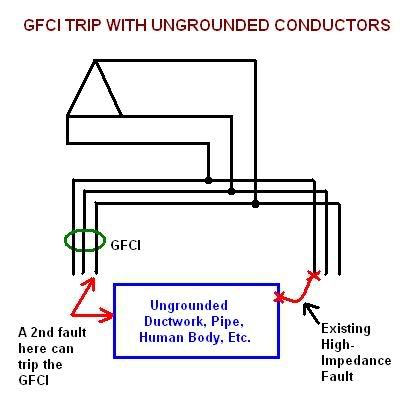- Location
- Illinois
- Occupation
- retired electrician
Jon,Tom said "Working in a panel that was protected by 50a GFCI".
That statement is a little ambiguous. It could mean any of the following:
GFPE with a 50A fault threshold
GFPE with a 50mA fault threshold
OCPD with a 50A rating and GFCI protection.
I assumed the latter.
-Jon
I didn't read it close enough and saw 50mA and not the 50A that was in Tom's post.
Even with a GFCI device with grounded neutral protection, I am not sure it should trip when you short the grounded to the grounding conductor with your fingers. Take a look at this document. It appears that they inject a 120 hZ current into the circuit to provide the grounded neutral protection, but use the same sensing coil to trip the device. I would think it would still require 4 to 6 mA of current.


